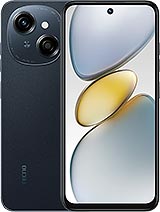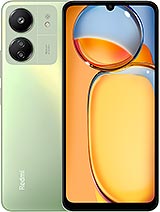Lava Agni 3 alternatives
Tap above to see alternatives.
Poco C75 alternatives
Tap above to see alternatives.
Lava Agni 3

Lava Agni 3
-
Dimensity 7300
4 nm
-
5000 mAh
66W
-
6.78"
1200 x 2652 pixels
-
50 MP
4K@30fps
-
Specs

4x2.5 GHz Cortex-A78
4x2.0 GHz Cortex-A55
2x2.0 GHz Cortex-A78
6x1.8 GHz Cortex-A55
8GB 256GB (UFS 3.1)
(wide), 1/1.55", 1.0µm, PDAF, OIS
8 MP
(telephoto), 1.0µm, PDAF, 3x optical zoom
8 MP
112˚ (ultrawide)
f/1.8, (wide)
Auxiliary lens
1080p@30fps
f/2.0, (wide), 1.0µm
f/2.2, (wide)
SIM1: Nano, SIM2: Nano
SIM1: Nano, SIM2: Nano
14 5G bands
n1, n2, n3, n5, n7, n8, n20, n28, n38, n40, n41, n66, n77, n78
7 5G bands
n1, n3, n5, n8, n28, n40, n78
In this performance comparison, the Lava Agni 3 with its Mediatek Dimensity 7300 (4nm) performs better than the Poco C75 with the Qualcomm Snapdragon 4s Gen 2 (4nm), thanks to superior chipset efficiency.
Lava Agni 3 offers 3 years of OS updates, whereas Poco C75 provides 2 years. Both phones receive the same 4 years of security updates.
Lava Agni 3 features a superior AMOLED display, while Poco C75 comes with an LCD panel. Both smartphones offer the same 120 Hz refresh rate. Lava Agni 3 also boasts a brighter screen with 1200 nits of peak brightness, enhancing outdoor visibility. Notably, Lava Agni 3 offers a higher screen resolution, resulting in sharper visuals and more detailed content.
Poco C75 features a larger 5160 mAh battery, potentially delivering better battery life. Lava Agni 3 also supports faster wired charging at 66W, compared to 18W on Poco C75.
Lava Agni 3 offers better protection against water and dust with an IP64 rating.
- Lava Agni 3 – Check price here
¹ Scores can vary even with the same chipset due to RAM, thermals, and software optimization.











